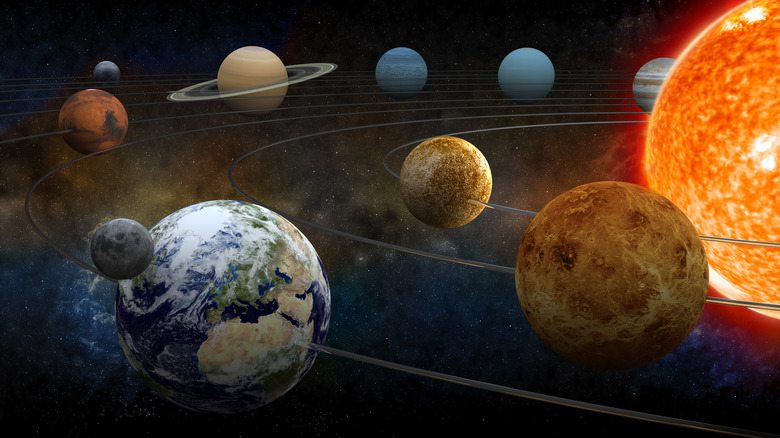The Science Behind Why Some Years Have Leap Days
This year, 2024, will see something a little bit unusual at the end of February: a leap day. This year's month of February will have an extra day compared to most Februaries, ending with February 29 instead of the usual February 28. The reason that happens is to due with the way that Earth orbits around the sun, and the arbitrary nature of time measurement.
We all know that a year lasts 365 days, but this isn't an exact figure. A day is based on the amount of time it takes Earth to complete a full, 360-degree rotation around its axis, while a year is measured by the amount it time it takes the Earth to complete a full revolution around the sun.
The problem is that a year does not perfectly divide into 365 days. Instead, Earth's days and years are the product of rounding, with the true length of a year clocking in at 365 days, 5 hours, 48 minutes, and 46 seconds, according to NASA.
This is where the leap day comes in. "The total amount of time it takes the Earth to complete a revolution around the sun is not exactly a whole number of days," said Renu Malhotra, a Planetary Sciences professor at the University of Arizona. "It falls about six hours short of that. So every four years we add a day to compensate."
An occasional leap year
Years that include a leap day, like 2024, are called "leap years," but solving this problem isn't quite as simple as adding a leap day every four years. That's because the adjustment of an extra day every four years works out at the rate of six hours added per year, which is just a little longer than the 5 hours and 48 minutes which are required. So occasionally, leap years are skipped to allow for this.
Generally, we skip leap years every 100 years, but even that isn't a hard rule. Malhotra notes that if a year is divisible by 100, but not by 400, we skip the leap year. This needs to be coordinated carefully across international organizations to ensure everyone is operating on the same time. As well as leap years, sometimes smaller adjustments called leap seconds need to be made to allow for Earth's rotation.
"Our calendar is constantly in need of monitoring," Malhotra explained. "Every now and then you'll hear about a leap second being added to a year. That happens sometimes because the Earth's rotation speed fluctuates, for example, from continental movements, and it is also slowing down gradually because of lunar and solar tides and friction within our planet. These can affect spin rate and make the planet rotate a little more or a little less in a given year."
Why timing is so important
Given how complex all of this is, and how much effort goes into keeping the world on time, you might wonder if it's really necessary. But accurate time keeping turns out to be extremely important for certain areas of science and technology.
For example, the GPS satellites orbiting Earth require very precise timekeeping to ensure they can provide accurate location data. According to GPS.gov, every GPS satellite contains a precise atomic clock, enabling it to track time within 100 billionths of a second.
This is important for everything from communications networks to power grids, as many different systems rely on GPS to keep accurate time. GPS is also used by government agencies such as the Federal Aviation Administration to synchronize hazardous weather reports.
Exact timing is also important when studying the stars, as the sensitive instruments taking astronomical readings rely on precise timekeeping to measure subtle differences in the data collected from distant stars and other bodies. As Malhotra explained. "I'm an astronomer, and for any observation of astronomical events, we need high accuracy to know when to schedule certain operations with very expensive equipment and facilities," she said. "Or when using navigation with GPS on your smartphone, the GPS satellites need that kind of accurate timekeeping."


